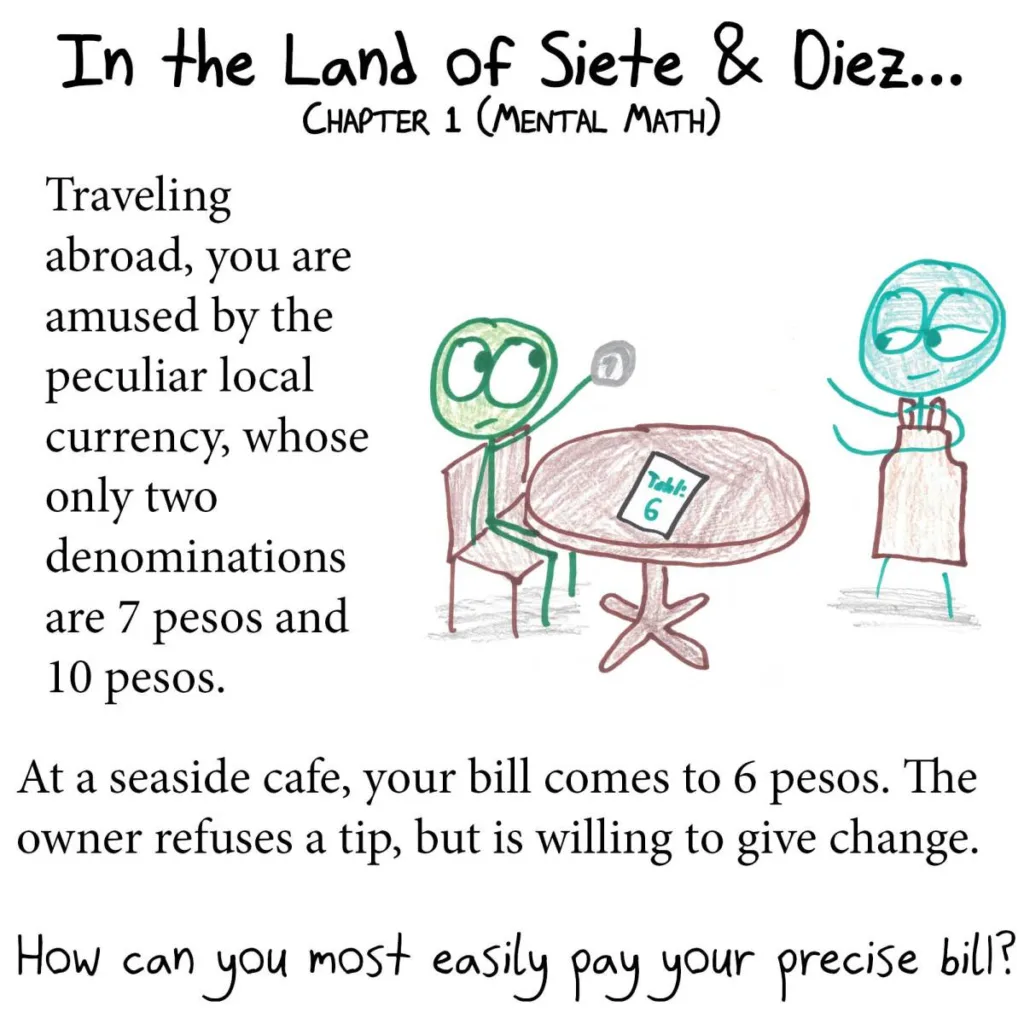Here are my answers – don’t scroll down unless you want spoilers (or want to correct me):
M
O
N
E
Y
M
O
N
E
Y
M
O
N
E
Y
M
O
N
E
Y
M
O
N
E
Y
M
O
N
E
Y
Chapter 1:
Bill = 6p.
Pay with two x 10p coins = 20p.
Change with two x 7p coins = 14p.
20 – 14 = 6. Total coins exchanged = 4 coins.
Chapter 2:
Bill = 5p Total coins exchanged = 8
This is the maximum number of coins exchanged for the bills between 1-10p
Chapter 3:
Bill = 29p Total coins exchanged = 9
This is the next highest number of coins exchanged after 8.
Chapter 4:
The most challenging but exciting of all chapters.
I don’t know python so I used MS Excel formulae and VBA macros.
My codes are far from the most efficient and there was a fair bit of trial and error and assistance from ChatGPT but I think I got there in the end…
Denominations of two even numbers are not possible to give change for all bills between 1-100p. Neither are denomination combos of multiples of 3 (e.g. 3,6 or 3,9).
Testing for all other denomination combinations, it would seem that 7,10 is a very efficient combination although NOT the most efficient.
The smaller denominations end up having lots of coins required for larger bills so the rumour that the government is causing busy work with 7,10 is not true.
However, the government could make their people less busy by using a 9,10 coin combination.
I calculated an EV (Efficiency Value) for each combination, which is the total number of coins in every exchange for bills 1-100p.
Here are some examples:
EV (1,2) = 2550
EV (3,5) = 1094
EV (7,10) = 694
EV (8,9) = 690
EV (9,10) = 670
I look forward to going to a holiday destination like this in the future : )

